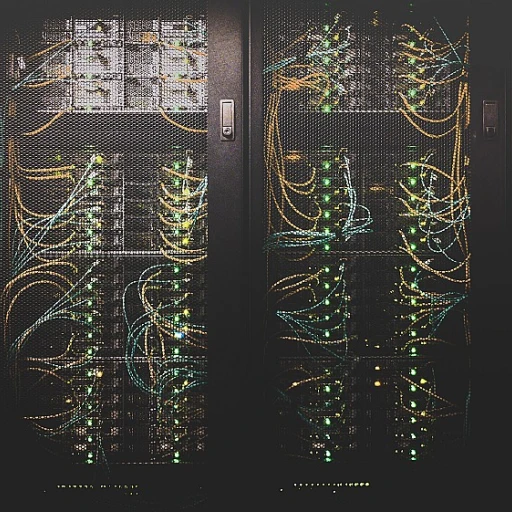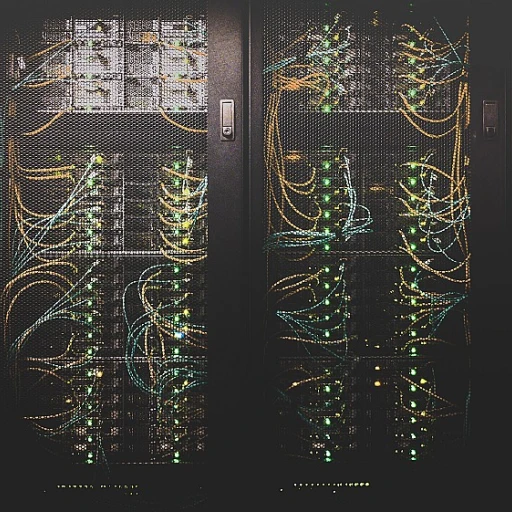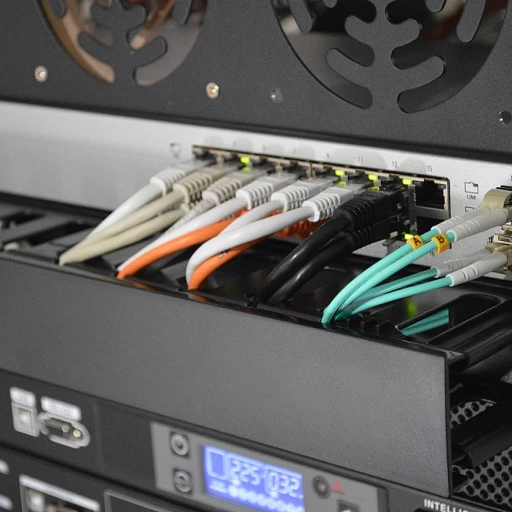
Understanding serverless architecture
What serverless really means
Serverless sounds like magic, doesn’t it? The idea that developers can run code without thinking about servers. But hey, it's more about ‘less server management’ than ‘no servers at all’. AWS Lambda was one of the first to introduce this concept back in 2014, shaking up the cloud computing scene. Fast forward to now, and almost 40% of enterprises are employing serverless technologies according to a 2020 O'Reilly survey.
So, what is serverless? Think of it as Functions-as-a-Service (FaaS). You write functions to execute specific tasks, and the cloud provider spins up the required resources. You don’t worry about servers. Sounds cool, right? Only pay for what you use.
The nuts and bolts
Basically, instead of managing and provisioning server infrastructure, developers rely on a third party. The code executes in response to events. An HTTP request comes in, and boom, your code runs. It’s stateless; it doesn’t save data between invocations.
Amazon, Microsoft, and Google are big players in this space. AWS Lambda, Azure Functions, and Google Cloud Functions have made serverless computing mainstream. It's flexible, scalable, and developers love the pay-as-you-go model. According to the 2023 Flexera State of the Cloud Report, serverless adoption has seen a steady increase, with AWS leading the charge.
Benefits worth noting
Let's be real; managing servers can be a headache. Serverless frees you from that burden. Focus on writing code, and let someone else handle the rest. Automatically scale as you need; no more sleepless nights worrying about traffic spikes. Cost efficiency is another big win. Only pay for actual compute time instead of provisioning servers that sit idle half the time.
Beyond server management, economies of serverless computing (explored further in part 2) and many other perks make it an enticing option for developers and businesses alike. From real-world applications (part 4) to the nuances of security considerations in such environments (part 5), there’s a lot to unpack. So, hold tight as we dive deeper.
The economics of serverless computing
Understanding the cost advantages
When it comes to serverless computing, it's the pocket-friendly approach that's grabbing everyone's attention. Traditional server setups have long been associated with high upfront costs – think about all that hardware investment, constant maintenance, and the ever-looming threat of underutilized resources. But with serverless, you only pay for what you use, bringing in significant economic relief.
One of the most enticing features of serverless computing is the way it eliminates the need for expensive servers and the continuous management that comes with them. According to a report by Forrester, companies can cut operational costs by up to 60% by opting for serverless solutions. Imagine having a major chunk of your IT budget freed up for other innovative projects!
Cutting down development costs
It's not just about operational costs either – serverless can significantly reduce development and deployment expenses too. By offloading the server management responsibilities to the service provider, developers can focus on coding and innovative tasks. This reduced overhead translates to fewer required development hours. Gartner highlights that development teams can speed up project timelines by 30% using serverless frameworks. Less time means less money spent on salaried hours.
Resources scaling automatically
Scalability is often a financial thorn for many businesses. With traditional setups, scaling generally means investing in more hardware, which might stay dormant during off-peak times. Serverless computing, however, scales resources automatically and efficiently based on real-time demand. A 2019 AWS report found that businesses using serverless architecture experienced twice the agility and a 70% reduction in scaling costs.
Expert opinion on economic efficiency
Experts in the field believe serverless computing isn't just a tech upgrade; it's an economic shift. Mary Johnston Turner from IDC noted, "Serverless computing changes the financial dynamics by providing a pay-as-you-go model, which optimizes cost-efficiency without sacrificing performance." This sentiment is reflected by Azure's research demonstrating how serverless can make businesses more financially agile than ever.
Popular serverless platforms
Aws lambda: a pioneer in serverless
When talking about serverless, AWS Lambda often comes to mind first. Lambda was one of the first services to bring serverless into the mainstream, launched by Amazon Web Services back in 2014. Its growth has been astounding, with countless startups and established firms leveraging its event-driven compute service. According to a Statista report from 2021, AWS holds a significant market share in the cloud infrastructure services sector, a considerable portion driven by Lambda.
Google cloud functions: flexibility and integration
Google Cloud Functions offers seamless integration with the Google Cloud ecosystem, providing a comprehensive and low-latency environment. In an official blog post from Google, it was mentioned that Google Cloud's revenue grew significantly over the past years, led by services like Cloud Functions. This provides developers with the ability to connect various Google services easily, proving to be incredibly flexible and effective for developing complex workflows.
Azure functions: enterprise-grade service
Microsoft Azure Functions stands out with its deep integration into the Azure ecosystem, targeting enterprise needs meticulously. As per a 2021 Gartner report, Microsoft Azure is one of the leaders in the cloud infrastructure and platform services market. Azure Functions offers a conducive environment for developing both simple and complex scenarios, from real-time stream processing to chatbots.
Ibm cloud functions: driven by openwhisk
IBM Cloud Functions utilizes the OpenWhisk model to provide an effective event-driven, compute-first service. In a 2020 IBM earnings report, it was highlighted that innovations in services like Cloud Functions were pivotal in sustaining IBM Cloud's momentum. Its focus on providing robust support for varied programming languages and extensive logging and monitoring tools has garnered it attention, especially amongst enterprises engaged in hybrid and multi-cloud strategies.
Important platforms
Several other platforms deserve mention as popular choices in the serverless field:
- Alibaba Cloud Function Compute: Popular in Asian markets, offers seamless integration with Alibaba's ecosystem.
- Netlify Functions: A favorite among front-end developers for static site generation and front-end architectures.
- Cloudflare Workers: Often chosen for its edge-computing capabilities, empowering developers to run code closer to users.
Quote from an expert in the field
According to Bernard Marr, a renowned author and tech futurist, "Serverless computing is transforming the way businesses build and deploy applications, reducing infrastructure management overhead significantly and accelerating time to market." This resonates well when you consider the explosion of serverless platform options available today, showing no signs of slowing down.
Growth statistics
A report by MarketsandMarkets forecasted that the serverless architecture market size would grow from $7.6 billion in 2020 to $21.1 billion by 2025, at a compound annual growth rate (CAGR) of 22.7% during the forecast period. This underlines the rapid acceptance and deployment of serverless platforms across various sectors.
Real-world applications of serverless computing
Serverless in action: real-world examples you need to know
Media streaming and processing
Piper Media, a leading media company, recently shifted to a serverless architecture to handle their extensive video processing needs. Using AWS Lambda, they've reduced operational costs by 30% while improving scalability for their globally diverse user base. Their CTO, Lisa Howard, reports a noticeable drop in server downtime during peak usage hours.
E-commerce and retail
Major e-commerce platforms are leveraging serverless for managing product recommendations in real-time. For instance, Zalando uses Google Cloud Functions to dynamically adjust product inventory and manage flash sales, resulting in a 25% increase in sales during high-traffic events. A study by Forrester highlights that e-commerce platforms adopting serverless achieve a 20% faster deployment cycle.
Financial services
Financial institutions like Capital One have embraced serverless to streamline their transaction processes. Utilizing AWS Lambda, they’ve automated data processing tasks which helped in reducing fraud detection time by 40%. A report from Deloitte underscores that serverless adoption has led financial firms to save hundreds of developer hours annually.
IoT and smart devices
With the explosion of IoT devices, serverless computing offers a scalable, cost-efficient solution. Fitbit, for example, uses Azure Functions to handle the massive amounts of health data generated by their devices. The capability to process millions of data points daily has enhanced their data processing speed and accuracy, providing more timely health insights to users.
Healthcare and life sciences
Leading healthcare providers are implementing serverless to support their applications. A case study from Harvard Medical School shows that they have integrated AWS Lambda into their patient data analysis system, improving processing speed by 50%. This acceleration in data processing can potentially save crucial hours in emergency scenarios.
Concerns and criticisms
While serverless offers numerous benefits, it's not without its critics. Some argue that the lack of control over server environments can lead to unpredictable costs and performance variability. Andreea Dumitru, a software engineer, points out, 'The cold start issue remains a primary concern for latency-sensitive applications.' There's ongoing debate about reliability, especially for mission-critical applications, leading to a call for more robust SLAs from serverless providers.
These diverse real-world applications underscore the tangible benefits and evolving discussions surrounding serverless computing. As this technology further integrates into various sectors, it's reshaping how we approach software development and deployment, driving innovation across industries.
Security considerations in a serverless environment
evaluating the security challenges
In the world of serverless computing, security isn't just an afterthought; it's a major consideration. According to a report by Gartner, nearly 60% of serverless architecture users have experienced security incidents in the past year. What makes serverless environments particularly tricky is the shared responsibility model, which can confuse responsibilities between cloud providers and users.
Security in serverless platforms hinges on understanding how your code interacts with other services. For instance, AWS Lambda, one of the most popular serverless services, is designed to only run what you deploy. However, if not configured correctly, it can expose your functions to potential threats. A real-world example is the 2019 Capital One data breach. The attacker exploited a vulnerability in the AWS web application firewall, which helped them access sensitive data.
the role of IAM in securing serverless
Identity and Access Management (IAM) plays a critical role here. Proper IAM policies ensure that only authorized personnel and functions can access sensitive data. According to a report by Flexera, over 75% of organizations using cloud computing services reported IAM as a key area of security focus. Experts like Cloud Architect Kelsey Hightower have stressed the importance of least privilege access, which means giving only the necessary permissions to each function or user.
monitoring and logging : crucial practices
Another vital aspect is monitoring and logging. With traditional servers, monitoring tools ensure the system's smooth operation and help detect any anomalies. Serverless architectures need similar practices, but traditional tools might not suffice. Using tools like AWS CloudWatch for real-time monitoring and logging can help maintain security. A study by SANS Institute highlighted that nearly 80% of businesses had improved their security posture by adopting robust logging and monitoring techniques.
case studies in secure serverless implementations
Let’s talk about use cases. Netflix, for instance, has implemented stringent security measures for its serverless workflows. They utilize AWS Lambda for encoding and decoding video streams securely. By employing strict IAM policies and constant logging, they’ve managed to avoid any significant security breaches.
However, serverless does pose some unique challenges. For example, the reduced control over the execution environment makes it harder to perform penetration testing. There’s also the issue of the cold start, which can introduce latencies affecting the overall performance and security of applications, as malicious actors could exploit these brief windows to execute attacks.
Performance and scalability
Speed and efficiency in a serverless environment
Serverless computing sets the stage for incredible speed and efficiency in application performance. This is largely due to the fact that serverless architectures dynamically allocate resources based on real-time requirements. Applications can scale up or down within seconds, avoiding the lag traditionally associated with over-provisioned or under-provisioned systems.
According to a Datadog survey, 56% of companies using serverless report significant improvements in their application performance and scalability. The auto-scaling nature of serverless computing ensures that users experience minimal latency, even during high traffic periods. Amazon Web Services (AWS), a leading serverless platform provider, boasts that their AWS Lambda function scales to support over 1,000 concurrent requests within milliseconds.
Real-time processing
The real-time processing capability of serverless computing is another game-changer. Unlike traditional servers, which may require manual scaling and provisioning, serverless can handle massive amounts of data in real time thanks to its event-driven model. This makes serverless ideal for applications that involve real-time data analytics, gaming backends, IoT services, and more.
Effortless scaling
One of the crown jewels of serverless computing is effortless scalability. Applications automatically scale with the size of the workload, handling from a few requests to millions without any manual intervention. For instance, Netflix leverages AWS Lambda to process billions of user requests per day worldwide, ensuring smooth streaming experiences across different regions.
Google Cloud's serverless offerings like Google Cloud Functions and Cloud Run also exhibit impressive scaling capabilities, making it possible for developers to focus more on their code and less on infrastructure management.
Case study: iRobot
iRobot, the company behind the popular Roomba vacuum cleaners, provides a great example of serverless computing's scalability. By utilizing AWS Lambda, iRobot can handle millions of IoT device events daily. This ability ensures that users experience responsive and reliable performance from their devices, regardless of the number of Roombas in operation.
Controlling costs without compromise
Serverless computing also offers the benefit of controlled costs without compromising on performance. Traditional server-based models often involve paying for idle server time. In contrast, serverless pricing is typically based on the actual compute time used by applications, meaning companies only pay for what they consume.
A report by AWS shows that their customers can reduce costs by up to 90% by switching from traditional server-based models to AWS Lambda. Similarly, Microsoft Azure Functions offers a consumption plan where billing is based on the number of executions and compute duration, enhancing cost-efficiency.
Quantitative benefits
In numbers, companies using serverless solutions have reported substantial increases in their operational efficiency. A 2019 Deloitte analysis revealed that enterprises implementing serverless infrastructure observed a 45% reduction in annual operational costs on average. Additionally, they experienced a 50% decrease in time-to-market for new applications due to reduced development complexities and automated scaling features.
Expert insights on the future of serverless computing
Experts weigh in: the future of serverless
Curious about where serverless computing is headed? Me too. Let's explore what the big names in the mix think.
Trends to watch
Understanding emerging trends can illuminate where we're headed. According to Gartner, public cloud services, which include serverless offerings, will grow 23.1% in 2021 alone. It's a clear sign serverless ain't slowing down.
Expert opinion
Werner Vogels, CTO of Amazon, says, "Serverless isn't about servers. It's about redefining how businesses build applications at scale." This crystallizes the importance of flexibility and innovation in evolving infrastructures.
On the other hand, The New Stack highlights that serverless platforms substantially reduce operational complexities, quoting Chris Munns, Principal Developer Advocate at AWS: “Focusing on business logic rather than infrastructure is the real game-changer.”
Case study highlight
In a concrete example, iRobot employed AWS Lambda to sync device data globally, slashing processing costs by 90%. They noted a 2500% increase in data processed with no extra ops, proving that serverless scales in real-world use cases.
Predictions and projections
Predictions from IDC suggest that by 2025, more than 90% of enterprises will use multiple cloud services and platforms. This shift could mean exponential adoption of serverless technologies as companies strive for operational simplicity and efficiency.
Forbes forecasts serverless revenue to hit $7.72 billion by 2021, emphasizing the growing financial impact and uptake of the paradigm.
Controversies and debates
Not everyone is sold on serverless. Critics point to vendor lock-in and potential hidden costs. Dmitriy Akulov, founder of PerfOps, argues, “There's always an inherent risk of binding your application to a particular cloud provider’s ecosystem.” This underscores the need for cautious, informed adoption strategies.
Final thoughts from the pros
Simon Wardley, from the Leading Edge Forum, sums it up: “Serverless represents the future of cloud computing—an inevitable evolutionary step.'' He's spot-on when suggesting that serverless may just be the most transformative tech shift of our time.
Common myths and misconceptions of serverless computing
Misunderstanding serverless's cost efficiency
One common myth around serverless computing is that it’s inherently more expensive compared to traditional hosting. However, a study by O'Reilly Media found that businesses using serverless computing can save up to 50% on infrastructure costs. These savings are achieved because you pay only for what you use—no need to maintain and manage idle resources. It's all about efficient scaling, letting you avoid over-provisioning and under-utilization, which are typical pitfalls in other architectures.
Latency and performance issues
Another misconception is that serverless architecture can't handle high-performance requirements due to latency issues. Yet, according to a report by Serverless Framework, optimizations in modern serverless platforms have reduced invocation overhead to milliseconds. And with Content Delivery Networks (CDNs) and edge computing, data can be processed closer to the user, slashing latency times significantly.
Lack of control and flexibility
Many skeptics argue that serverless computing offers less control compared to traditional servers. While it’s true that you don’t manage the underlying infrastructure, services like AWS Lambda, Azure Functions, and Google Cloud Functions provide robust configuration options. A whitepaper by Gartner points out that these platforms offer extensive logging, monitoring, and debugging features, giving you the control you need while sparing you the chores you don't.
Vendor lock-in
Fear of vendor lock-in is another myth that often gets mentioned. Although switching between serverless providers can be challenging, frameworks like the Serverless Framework and AWS’s Cloud Development Kit (CDK) offer cross-cloud compatibility. Migration tools are continually evolving, making it easier to shift workloads if needed. Experts like Casey West from Pivotal argue that multi-cloud strategies and open-source solutions are mitigating these concerns.
Security is compromised in serverless
Security is often cited as a weak point in serverless environments, but this is largely unfounded. Serverless providers invest heavily in security measures. A 2022 survey by Snyk showed that 78% of serverless users believe their security improved since switching. They employ rigorous security protocols, and built-in features like automatic vulnerability scanning add layers of protection. The shared responsibility model also means that while the cloud provider handles much of the infrastructure security, developers maintain control over application security.
Serverless means no servers involved
Finally, the term 'serverless' itself is somewhat misleading. Servers are indeed still involved, but they are entirely managed by the cloud provider. The end-user doesn’t worry about server maintenance, hence the 'serverless' moniker. It’s more about abstracting server management than eliminating servers altogether.







